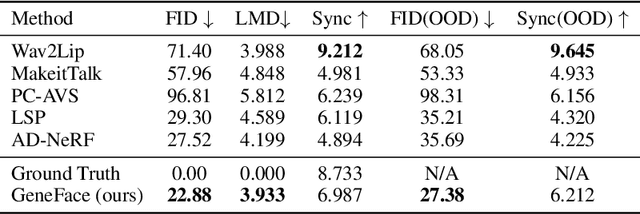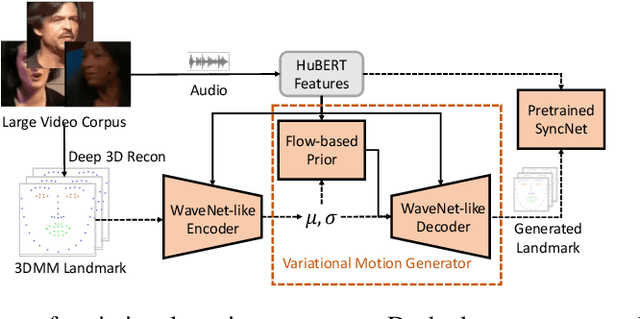JinZheng He
StyleSinger: Style Transfer for Out-of-Domain Singing Voice Synthesis
Jan 02, 2024Abstract:Style transfer for out-of-domain (OOD) singing voice synthesis (SVS) focuses on generating high-quality singing voices with unseen styles (such as timbre, emotion, pronunciation, and articulation skills) derived from reference singing voice samples. However, the endeavor to model the intricate nuances of singing voice styles is an arduous task, as singing voices possess a remarkable degree of expressiveness. Moreover, existing SVS methods encounter a decline in the quality of synthesized singing voices in OOD scenarios, as they rest upon the assumption that the target vocal attributes are discernible during the training phase. To overcome these challenges, we propose StyleSinger, the first singing voice synthesis model for zero-shot style transfer of out-of-domain reference singing voice samples. StyleSinger incorporates two critical approaches for enhanced effectiveness: 1) the Residual Style Adaptor (RSA) which employs a residual quantization module to capture diverse style characteristics in singing voices, and 2) the Uncertainty Modeling Layer Normalization (UMLN) to perturb the style attributes within the content representation during the training phase and thus improve the model generalization. Our extensive evaluations in zero-shot style transfer undeniably establish that StyleSinger outperforms baseline models in both audio quality and similarity to the reference singing voice samples. Access to singing voice samples can be found at https://stylesinger.github.io/.
GeneFace: Generalized and High-Fidelity Audio-Driven 3D Talking Face Synthesis
Jan 31, 2023



Abstract:Generating photo-realistic video portrait with arbitrary speech audio is a crucial problem in film-making and virtual reality. Recently, several works explore the usage of neural radiance field in this task to improve 3D realness and image fidelity. However, the generalizability of previous NeRF-based methods to out-of-domain audio is limited by the small scale of training data. In this work, we propose GeneFace, a generalized and high-fidelity NeRF-based talking face generation method, which can generate natural results corresponding to various out-of-domain audio. Specifically, we learn a variaitional motion generator on a large lip-reading corpus, and introduce a domain adaptative post-net to calibrate the result. Moreover, we learn a NeRF-based renderer conditioned on the predicted facial motion. A head-aware torso-NeRF is proposed to eliminate the head-torso separation problem. Extensive experiments show that our method achieves more generalized and high-fidelity talking face generation compared to previous methods.
 Add to Chrome
Add to Chrome Add to Firefox
Add to Firefox Add to Edge
Add to Edge